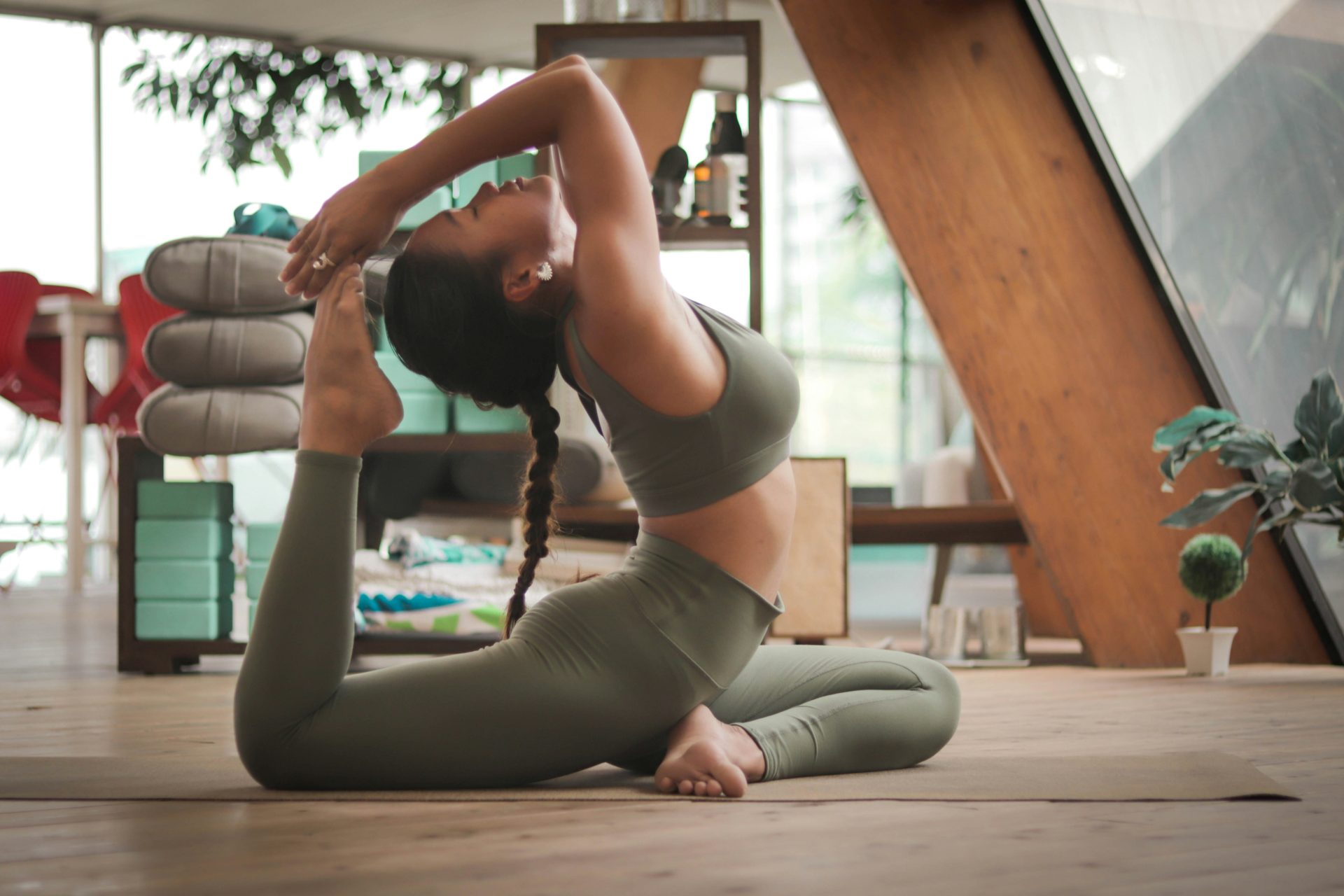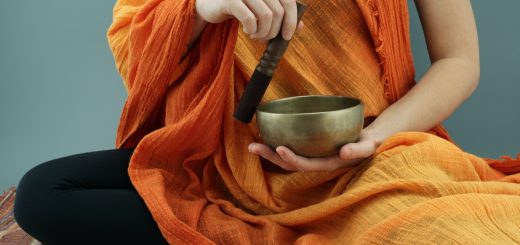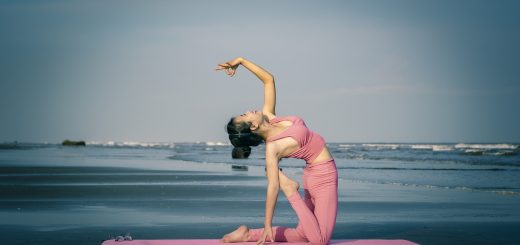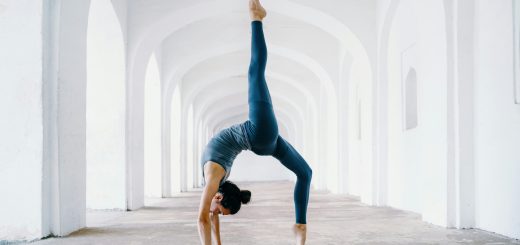Yoga Poses for Anxiety Relief: Calm Your Thoughts

Hey there, amazing readers! 🖐️ Just a quick note: yes, we know there are a lot of ads here. Trust us, we get it—it’s not the prettiest look, but they help us keep this blog alive and kicking. Those pesky little ads cover the costs of all the behind-the-scenes magic, from hosting and tech stuff to creating content we hope you’ll love.
We’re committed to delivering quality posts, and your support (even just sticking around despite the ads) means everything to us. So, bear with us, and thanks for helping us keep the good vibes rolling. Now, on to the fun stuff! 😉
TRANSLATE BUTTON AT THE END OF THE ARTICLE
A Quick Overview
Anxiety is a common mental health condition that affects millions of people worldwide.
It can manifest in various ways, such as excessive worry, fear, and nervousness, and can significantly impact daily life.
Managing anxiety is crucial for overall well-being, and one effective way to do so is through the practice of yoga.
Yoga offers numerous benefits for mental health, including reducing stress, promoting relaxation, and calming the mind.
In this article, we will explore how yoga poses can help alleviate anxiety and provide relief for those struggling with this condition.
Understanding Anxiety and Its Impact on Mental Health
Anxiety is a natural response to stress or danger, but when it becomes excessive and uncontrollable, it can lead to significant mental health issues.
Chronic anxiety can affect various aspects of a person’s life, including their relationships, work performance, and overall quality of life.
It can also manifest physically, leading to symptoms such as rapid heartbeat, sweating, and muscle tension.
Understanding the impact of anxiety on mental health is crucial in finding effective ways to manage and alleviate its symptoms.
The Benefits of Yoga in Managing Anxiety
Yoga has long been recognized for its positive effects on mental health, including anxiety relief.
The practice of yoga involves a combination of physical postures, breathing techniques, and meditation, all of which work together to promote relaxation and reduce stress.
Yoga has been shown to lower cortisol levels, the hormone associated with stress, and increase levels of GABA, a neurotransmitter that helps regulate mood.
By incorporating yoga into your daily routine, you can experience a wide range of benefits for managing anxiety and improving overall mental well-being.
How Yoga Poses Can Help Calm Your Thoughts
Yoga poses, or asanas, are an essential component of a yoga practice and can play a significant role in calming the mind and reducing anxiety.
Certain yoga poses are specifically designed to release tension in the body, promote relaxation, and quiet the mind.
By focusing on your breath and body alignment during yoga poses, you can cultivate mindfulness and create a sense of inner peace.
The physical practice of yoga can also help release endorphins, known as "feel-good" hormones, which can elevate your mood and reduce feelings of anxiety.
Top 5 Beginner-Friendly Yoga Poses for Anxiety Relief
Child’s Pose (Balasana): This calming pose gently stretches the back, hips, and thighs while promoting relaxation and a sense of surrender.
Cat-Cow Pose (Marjaryasana-Bitilasana): This gentle flow between two poses helps release tension in the spine and promotes deep breathing, which can aid in reducing anxiety.
Standing Forward Fold (Uttanasana): This pose stretches the hamstrings and back, allowing for a release of tension and a calming of the mind.
Legs Up the Wall Pose (Viparita Karani): This restorative pose promotes relaxation and helps reduce stress and anxiety by allowing blood to flow back to the heart.
Corpse Pose (Savasana): This final relaxation pose allows for complete surrender and release of tension, promoting deep relaxation and a sense of calm.
Intermediate Yoga Poses for Managing Anxiety
Warrior II Pose (Virabhadrasana II): This empowering pose helps build strength and stability while promoting focus and concentration, which can help alleviate anxiety.
Tree Pose (Vrksasana): This balancing pose encourages mindfulness and concentration, helping to quiet the mind and reduce anxiety.
Bridge Pose (Setu Bandhasana): This backbend pose opens the chest and promotes deep breathing, which can help calm the nervous system and reduce anxiety.
Extended Triangle Pose (Utthita Trikonasana): This pose stretches the entire body and promotes balance and stability, fostering a sense of calm and relaxation.
Pigeon Pose (Eka Pada Rajakapotasana): This hip-opening pose releases tension in the hips and lower back, where many people hold stress and anxiety.
Advanced Yoga Poses for Deep Relaxation
Shoulder Stand (Sarvangasana): This inversion pose stimulates the thyroid gland and promotes relaxation by reversing the flow of blood in the body.
Headstand (Sirsasana): This challenging inversion pose helps increase blood flow to the brain and can improve focus and concentration, reducing anxiety.
Lotus Pose (Padmasana): This seated meditation pose promotes stillness and inner peace, helping to calm the mind and reduce anxiety.
Camel Pose (Ustrasana): This heart-opening backbend pose helps release tension in the chest and shoulders, promoting emotional release and relaxation.
Fish Pose (Matsyasana): This gentle backbend pose opens the heart and throat chakras, promoting emotional healing and relaxation.
Breathing Techniques to Enhance Anxiety Relief
In addition to yoga poses, practicing breathing techniques can further enhance anxiety relief and promote relaxation.
Deep breathing exercises, such as diaphragmatic breathing or alternate nostril breathing, can help calm the nervous system and reduce stress levels.
By focusing on your breath and taking slow, deliberate inhales and exhales, you can create a sense of calm and presence in the moment.
Incorporating breathing techniques into your yoga practice can help you connect with your body and quiet the mind, providing relief from anxiety symptoms.
Incorporating Meditation into Your Yoga Practice
Meditation is another powerful tool for managing anxiety and promoting mental well-being.
By incorporating meditation into your yoga practice, you can cultivate mindfulness, improve focus, and reduce stress levels.
Meditation involves sitting quietly and focusing on your breath or a specific mantra, allowing you to quiet the mind and create a sense of inner peace.
By practicing meditation regularly, you can develop a greater sense of self-awareness and emotional resilience, which can help you better cope with anxiety and other mental health issues.
Creating a Relaxing Yoga Routine for Anxiety
To create a relaxing yoga routine for anxiety relief, start by setting aside a specific time each day for your practice.
Begin with a few minutes of deep breathing to center yourself and calm your mind.
Incorporate a combination of beginner-friendly, intermediate, and advanced yoga poses to stretch and strengthen your body while promoting relaxation.
End your practice with a few minutes of meditation or savasana to allow for complete relaxation and integration of your practice.
By establishing a consistent yoga routine, you can create a sense of stability and calm in your daily life, helping to manage anxiety and improve mental well-being.
Practicing Mindfulness During Yoga Poses
Mindfulness is a key component of yoga practice and can greatly enhance the benefits of yoga for anxiety relief.
By staying present and focused on the sensations in your body during yoga poses, you can cultivate mindfulness and create a sense of inner peace.
Pay attention to your breath, body alignment, and any thoughts or emotions that arise during your practice.
By practicing mindfulness during yoga poses, you can develop a greater awareness of your body and mind, helping you to better manage anxiety and stress in your daily life.
Tips for Consistent Yoga Practice for Anxiety Relief
Set aside a specific time each day for your yoga practice, whether it’s in the morning, afternoon, or evening.
Create a dedicated space for your yoga practice that is peaceful and free from distractions.
Start with shorter yoga sessions and gradually increase the length and intensity of your practice as you become more comfortable.
Listen to your body and modify poses as needed to suit your individual needs and limitations.
Stay consistent with your yoga practice, even on days when you may not feel like practicing, as regularity is key to experiencing the full benefits of yoga for anxiety relief.
Seeking Professional Help When Needed
While yoga can be a powerful tool for managing anxiety, it’s essential to seek professional help when needed.
If you are struggling with severe anxiety or other mental health issues, consider reaching out to a therapist, counselor, or mental health professional for support.
They can provide you with personalized guidance and treatment options to help you cope with your anxiety symptoms and improve your overall well-being.
Remember that it’s okay to ask for help and that there are resources available to support you on your journey to better mental health.
Conclusion
In conclusion, yoga poses can be a valuable tool for managing anxiety and promoting mental well-being.
By incorporating yoga into your daily routine and practicing a combination of beginner-friendly, intermediate, and advanced poses, you can experience relief from anxiety symptoms and cultivate a sense of calm and relaxation.
By incorporating breathing techniques, meditation, and mindfulness into your yoga practice, you can further enhance the benefits of yoga for anxiety relief.
Remember to seek professional help when needed and to listen to your body as you embark on your journey to better mental health through yoga.

The Enlightenment Journey is a remarkable collection of writings authored by a distinguished group of experts in the fields of spirituality, new age, and esoteric knowledge.
This anthology features a diverse assembly of well-experienced authors who bring their profound insights and credible perspectives to the forefront.
Each contributor possesses a wealth of knowledge and wisdom, making them authorities in their respective domains.
Together, they offer readers a transformative journey into the realms of spiritual growth, self-discovery, and esoteric enlightenment.
The Enlightenment Journey is a testament to the collective expertise of these luminaries, providing readers with a rich tapestry of ideas and information to illuminate their spiritual path.
Our Diverse Expertise 🌟
While our primary focus is on spirituality and esotericism, we are equally passionate about exploring a wide range of other topics and niches 🌍📚. Our experienced team is dedicated to delivering high-quality, informative content across various subjects ✨.
To ensure we provide the most accurate and valuable insights, we collaborate with trusted experts in their respective domains 🧑🏫👩🏫. This allows us to offer well-rounded perspectives and knowledge to our readers.
Our blog originally focused on spirituality and metaphysics, but we’ve since expanded to cover a wide range of niches. Don’t worry—we continue to publish a lot of articles on spirituality! Frequently visit our blog to explore our diverse content and stay tuned for more insightful reads.






